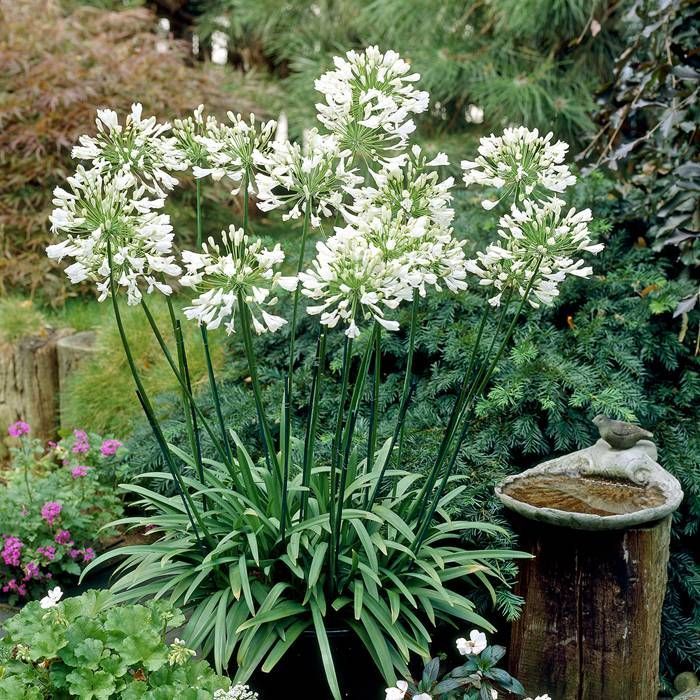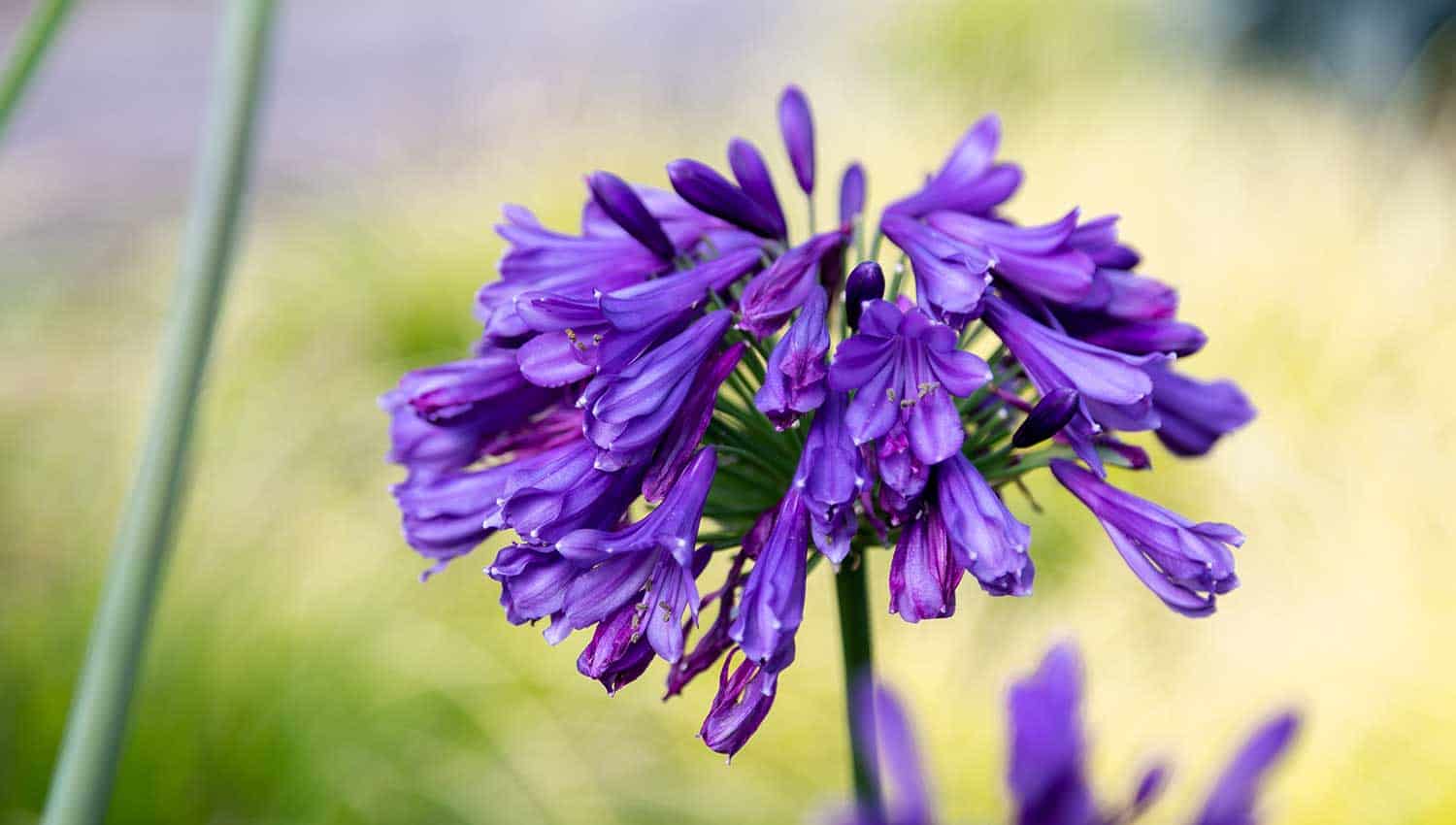Letting Loose the Secret to Effective Agapanthus Cultivation: Idea for a Flourishing Yard
In the realm of gardening, growing agapanthus effectively requires a tactical technique that incorporates various elements of plant care. By comprehending the subtleties of agapanthus cultivation, one can produce an environment where these plants thrive and grow perfectly.
Growing Agapanthus: Best Practices
When planting Agapanthus, correct soil prep work is vital for guaranteeing successful growth and growth of these gorgeous blossoms. Agapanthus, generally called Lily of the Nile or African lily, thrives in well-draining soil with a slightly acidic to neutral pH level - Agapanthus. Prior to growing, it is crucial to modify hefty clay soils with raw material such as compost or peat moss to enhance drain and give essential nutrients for the plants
To plant Agapanthus, select a location that gets complete sunlight to partial shade, as this will certainly promote healthy and balanced growth and bountiful blooming. Dig a hole two times the diameter of the plant's root ball and put the Agapanthus at the exact same depth it was formerly expanding. Delicately backfill the hole with soil, pushing down firmly to remove any type of air pockets around the origins.
Water the newly planted Agapanthus extensively and continue to keep the soil uniformly damp, particularly throughout the plant's energetic growing season. Agapanthus. Using a well balanced plant food once a month can even more sustain the plant's development and blooming. By following these best methods for growing Agapanthus, you can produce a stunning display of these fascinating blossoms in your yard
Perfect Dirt Issues for Agapanthus
For ideal development and blooming success of Agapanthus plants, making certain the dirt conditions are perfect is essential. Agapanthus grows in well-draining soil with a slightly acidic to neutral pH level ranging from 6.0 to 7.0. This type of soil permits appropriate water drain, protecting against waterlogging which can bring about root rot. To improve soil drain, think about including raw material such as garden compost or peat moss when preparing the planting site. Furthermore, Agapanthus prefers soil that is abundant in nutrients, so integrating a well balanced plant food throughout the expanding season can advertise healthy growth and dynamic blooms.

Watering and Fertilizing Tips
To make certain healthy development and vibrant blooms, proper watering and feeding methods are vital for effective Agapanthus cultivation. Agapanthus plants profit from normal watering, specifically throughout the growing season.
When it pertains to fertilizing Agapanthus, a balanced plant food with equal parts nitrogen, phosphorus, and potassium can be used in the springtime to promote healthy and balanced growth and check flowering. Slow-release plant foods are optimal for offering nutrients slowly over an extended duration. Prevent over-fertilizing, as this can lead to extreme vegetation development at the expense of blooms.
In addition, incorporating raw material like garden compost right into the soil can improve nutrient degrees and boost soil framework, aiding in the total health and wellness of the Agapanthus plants. By complying with these watering and fertilizing ideas, gardeners can ensure their Agapanthus plants grow and produce stunning display screens of blossoms.
Pruning and Deadheading Strategies
Proper trimming and deadheading strategies play a vital duty in maintaining the health and wellness and appearances of Agapanthus plants, enhancing the essential techniques of watering and fertilizing for effective cultivation. Pruning Agapanthus involves getting rid of spent blossom heads, yellowing or dead fallen leaves, and total shaping of the plant to advertise much better development. Deadheading, the process of eliminating discolored flowers, not only improves the plant's look but likewise motivates additional growing.
When deadheading Agapanthus, it is suggested to snip off the flower stem at the base making use of sharp, clean shears. This process redirects the plant's power from seed production back right into origin and foliage growth, promoting a much healthier and more durable plant. Normal deadheading can extend the flowering duration of Agapanthus and protect against self-seeding, which can lead to overcrowding.
In terms of trimming, Agapanthus normally take advantage of a light trim after blooming to clean the plant next and urge fresh development. Reducing the invested blossom stems and getting rid of any kind of dead or broken vegetation aids preserve the plant's vigor and total look. Nonetheless, it is important to stay clear of reducing right into the crown of the plant, as this can deteriorate its health and wellness.

Protecting Agapanthus From Vermins and Diseases
Executing reliable insect and condition monitoring methods is essential to guarding the wellness and vigor of Agapanthus plants in cultivation. One typical parasite that impacts Agapanthus is the Agapanthus borer, a caterpillar that passages into the plant, triggering damages to the fallen leaves and flowers.
Along with pests, Agapanthus are prone to conditions such as root rot and fungal leaf places. These issues can typically be stopped by making certain proper drainage and staying clear of overwatering. If signs of illness show up, influenced components of the plant need to be quickly click site eliminated to protect against additional spread. Fungicides might additionally be utilized as a therapy action, following the producer's directions very carefully. By remaining cautious and addressing insect and illness problems immediately, garden enthusiasts can aid their Agapanthus grow and prosper.

Final Thought
In conclusion, successful growing of agapanthus calls for appropriate planting methods, ideal soil problems, adequate watering and fertilizing, normal pruning and deadheading, and defense from bugs and conditions. By complying with these pointers and tricks, garden enthusiasts can make sure a flourishing yard loaded with attractive agapanthus flowers. Agapanthus. Bear in mind to maintain constant treatment and interest to information to promote the wellness and longevity of these sensational plants
When growing Agapanthus, proper soil preparation is important for making sure successful development and development of these gorgeous flowers.Water the recently grown Agapanthus extensively and proceed to maintain the dirt uniformly damp, particularly throughout the plant's energetic growing season.For ideal growth and flowering success of Agapanthus plants, guaranteeing the dirt conditions are excellent is crucial. When hair transplanting or growing Agapanthus, make sure the soil is well-prepared to provide the required foundation for the plants to establish themselves successfully. One common parasite that influences Agapanthus is the Agapanthus borer, a caterpillar that tunnels into the plant, creating damage to the blossoms and fallen leaves.